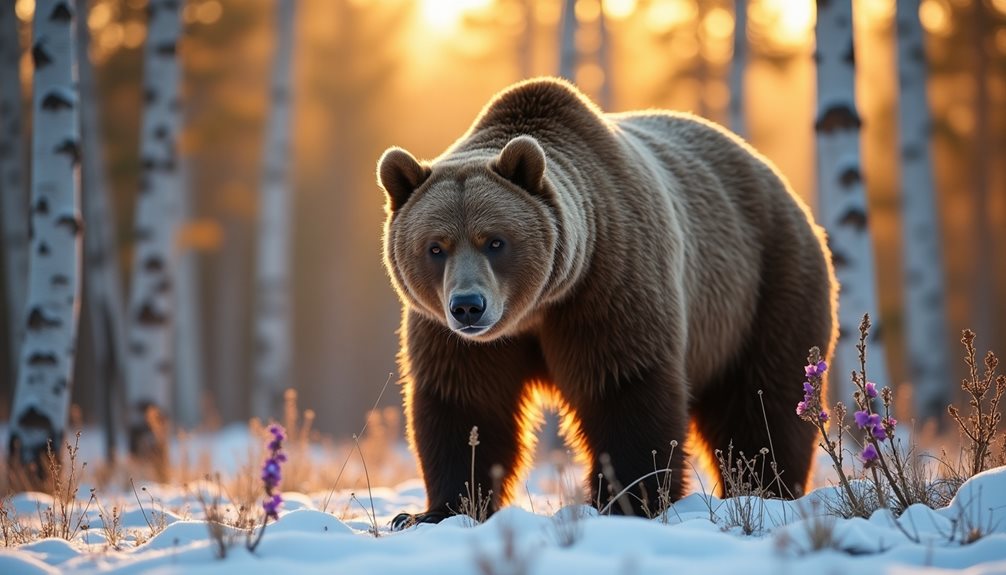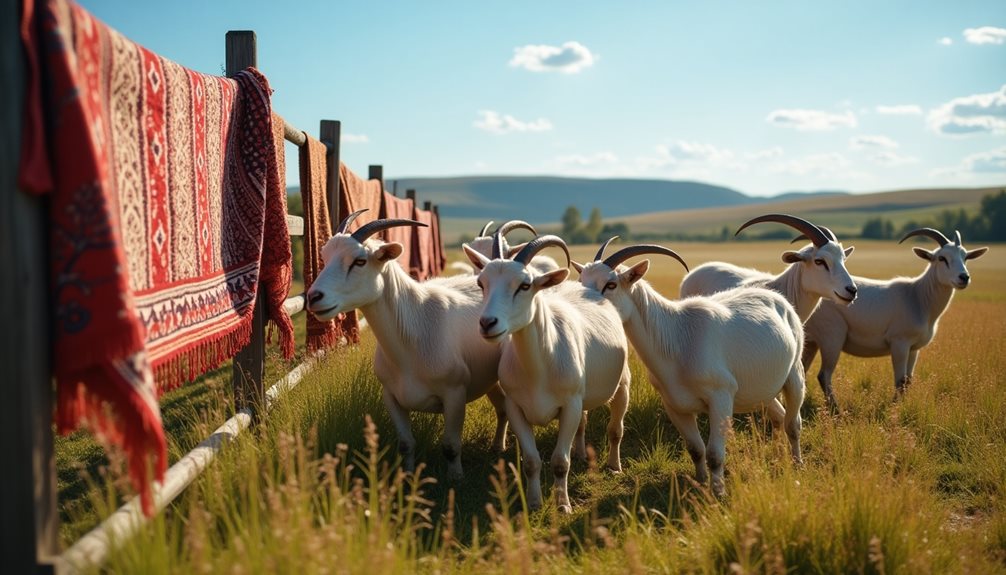The bear is a rich and multifaceted symbol in Russian culture, blending ancient traditions with contemporary identity. Its strength and protective qualities resonate deeply within the cultural imagination. Over time, the image of the bear has evolved through literature, art, and commerce, influencing how the country is perceived both at home and internationally. As Russia moves forward in the modern world, the meaning of this enduring emblem continues to develop. What insights does this lasting symbol offer about the nation’s evolving story and aspirations for the future?
Historical Roots of Bear Symbolism in Russia

The bear has long been intertwined with Russian cultural identity, despite never being officially recognized as a national symbol. This powerful animal holds a special place in the collective imagination of Russia, rooted deeply in centuries-old folklore and ancient pagan beliefs.
Origins in Slavic Paganism
In early Slavic pagan traditions, the bear was revered as a sacred totem animal. Slavic tribes viewed the bear not only as a formidable creature of the forest but also as a spiritual guardian. It symbolized strength, courage, and protection—qualities essential for survival in the harsh northern climate. The bear was often associated with the god Veles, a deity connected to nature, cattle, wealth, and the underworld, reflecting the bear’s importance in both physical and spiritual realms.
Rituals and ceremonies involving bears were common, including symbolic hunts and offerings to ensure good fortune and protection for the tribe. The bear’s hibernation cycle was also linked to themes of death and rebirth, mirroring seasonal changes and life renewal—an idea that permeated folk tales and seasonal festivals.
The Dual Nature of the Bear
One reason the bear resonates so strongly within Russian culture is its dual character: it is ferocious and dangerous when threatened, yet protective and nurturing when calm. This duality embodies a balance between power and kindness, reflecting qualities Russians have traditionally admired and aspired to.
In folklore, bears often appear as wise but formidable figures—sometimes helpers, sometimes obstacles—mirroring humanity’s complex relationship with nature. The bear’s imposing presence was seen as a source of security in the wild, symbolizing resilience against adversities.
The Bear as an Unofficial National Symbol
Though never formally adopted by the government, the bear has become an unofficial emblem of Russia. It appears frequently in literature, art, political cartoons, sports mascots, and commercial branding. During international sports events like the Olympics, Russian teams have used bear mascots to represent national pride, strength, and endurance.
The bear also symbolizes Russia’s vast wilderness—rough, untamed, yet majestic—mirroring the country’s geographic expanse and natural resources. This connection reinforces a sense of identity rooted in endurance and fortitude.
Interesting Facts
- The largest species native to Russia is the Eurasian brown bear (Ursus arctos arctos), which can weigh up to 700 kilograms (1,540 lbs).
- Bears have featured prominently in Russian fairy tales (skazki), often appearing as shape-shifters or wise creatures.
- The ancient Slavic tradition of “Medvezhya okhota” (bear hunt) was both a practical activity and a ritualistic event with social and spiritual significance.
- In modern Russia, bears are still found in large numbers across Siberia and the Far East, symbolizing an enduring connection to nature.
- The famous Russian circus tradition often includes trained bears performing acts, which has also contributed to the animal’s cultural prominence.
The Evolution of Bear Myths
Emerging from the complex relationship between the bear and Russian identity, European literature played a significant role in shaping and propagating myths about this creature. Bear folklore permeated narratives, often depicting the bear as a fierce, untamed symbol of the wild. This literary symbolism reinforced stereotypes, presenting the bear as an emblem of Russian resilience.
Prominent authors, influenced by travelers‘ accounts, crafted stories that blurred the line between reality and myth, elevating the bear to a cultural icon. Consequently, these literary interpretations shaped perceptions, embedding the bear into the European consciousness as both a fearsome beast and a symbol of Russian character.
Commercialization and the Bear’s Image
While the bear has often been associated with Russian identity, its commercialization in trade has greatly shaped its image and perception in both domestic and international markets. Commercial branding strategies leveraged the bear’s exotic allure, particularly in products like bear grease, which English merchants marketed as a remedy for baldness.
Such trade associations not only heightened demand but also reinforced stereotypes of Russia as mysterious and wild. This commercialization transformed the bear into a symbol of both national pride and global intrigue, influencing how consumers perceive Russian heritage while underscoring the bear’s dual role as a commercial and cultural icon.
The Bear’s Modern Role in Russian Identity
As the bear continues to occupy a significant place in the modern Russian consciousness, its role extends beyond mere folklore to become a complex emblem of national identity. This association reflects a broader narrative of Russian identity, intertwining historical reverence with contemporary cultural discourse. The bear’s imagery resonates deeply, evoking emotions tied to national pride and the enduring spirit of the Russian people. Consequently, the bear remains a potent symbol, embodying the intricate relationship between culture and the evolving essence of Russian identity.
The bear’s enduring presence in Russian culture underscores its significance as a symbol of strength, resilience, and national identity. As Russia continues to navigate the complexities of the modern world, the bear stands as a testament to the nation’s rich history and its vision for the future.





